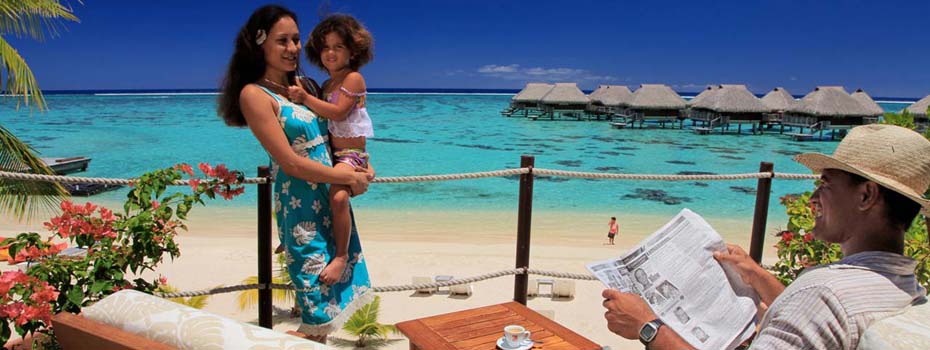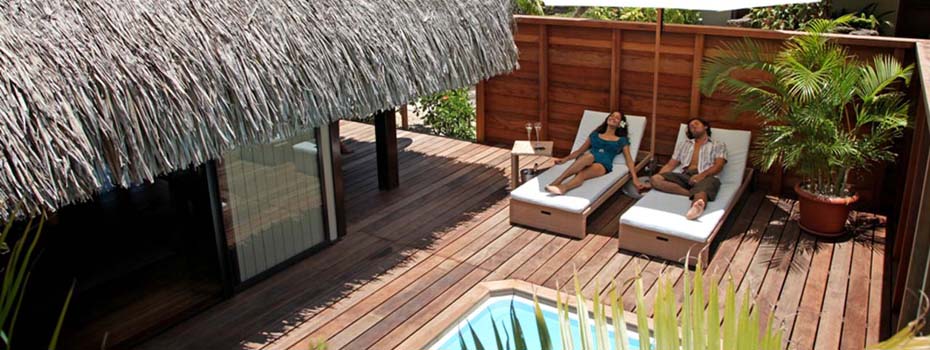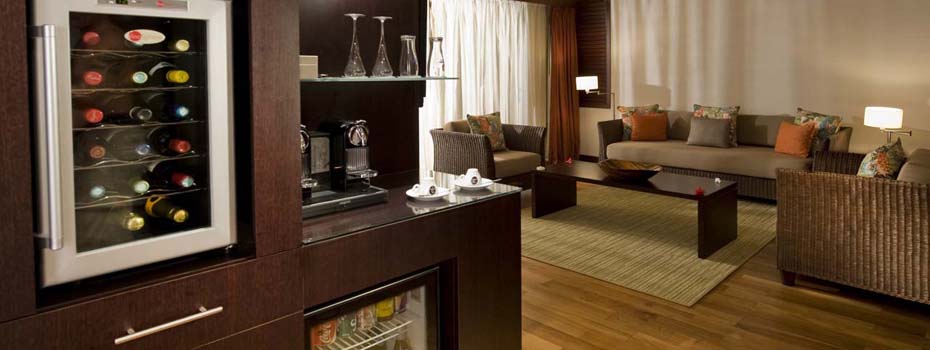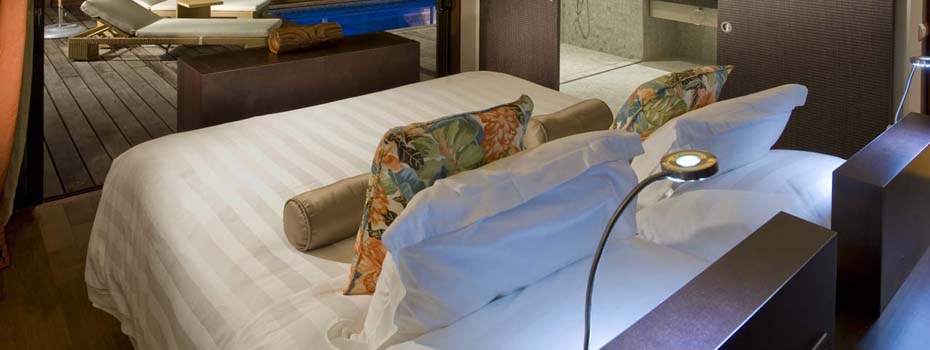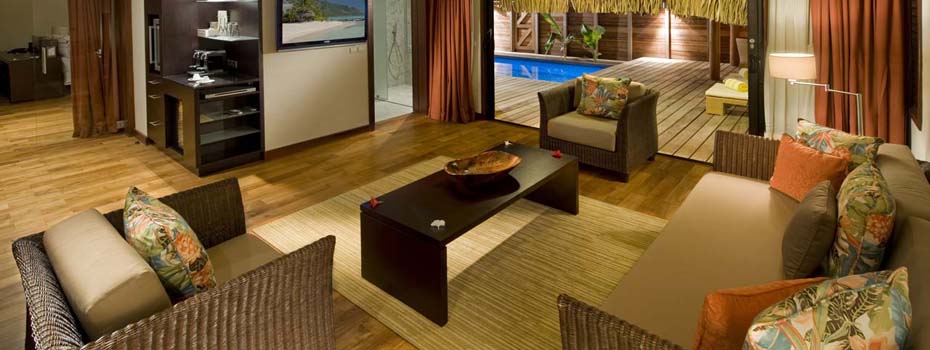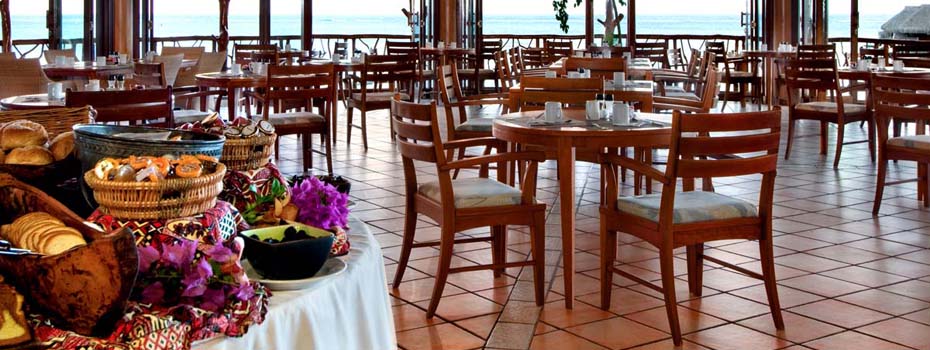Tahiti is the largest and most populated island, and is the starting point for all international travelers. International flights land at Faa’a Airport in the capital city of Papeete located 8 km south . Upon arrival, visitors receive a typical Tahitian display of hospitality – a friendly welcome with fragrant Tiare flowers and Tahitian music.
Tahiti is a figure-eight shaped island divided into a larger part, known as Tahiti Nui (“Big Tahiti”) and a smaller peninsula called Tahiti Iti (‘Little Tahiti”). With lush green peaks reaching more than 7,300 feet, its scenery is dramatic.
Cascading waterfalls and rippling pools in the jungle-like interior provide a striking contrast to the black- and white-sand beaches and turquoise lagoons of the island’s perimeter. A circle island tour (about 70 miles) is a great way to get acquainted with the island.
Sightseeing on Tahiti
-
The Papeete Market
The Papeete Public Marketplace covers 7,000 sq. meters (75,350 sq. ft.) and is the lively and authentic heart of the city. It is open daily from 7:30 a.m. to 6 p.m. and 5-9am on Sundays. It is particularly crowded in the early morning. The market section devoted to fl owers and fruits should not be missed.
Flowers such as tiare Tahiti, taina, tipanier, pitate and many more species will engulf you with their sweet perfumes. The place to shop is on the top floor of the market, where typical Polynesian hand-made products are waiting for you: pareu, hats, bags and baskets, wonderfully carved wood objects, fabrics, bed covers with vegetal patters or hand-sewn ethnic decorations.
-
The Papeete City Hall
This French colonial-style building was inspired by the architecture of the Queen Pomare IV Palace.
-
Papeete’s Notre Dame Cathedral
Built in 1875 and restored in 1987, this church, with a fascinating blend of modern and ancient images decorating its windows.
-
Venus Point Lighthouse
Built by people from the Gambier Islands in 1867, the lighthouse confirmed the adjacent Matavai Bay as Tahiti’s main harbour at the island’s northernmost point of land. The majority of European explorers anchored here during the second half of the 18th Century. British navigator Lt. James Cook gave Venus Point its name in 1769 in honor of his mission to observe the passage of the planet Venus across the sun on June 3, 1769. The lighthouse overlooks a beautiful and big black sand beach.
-
The Tahara’a “One Tree Hill“ And Orientation Table
Located on the island’s north coast, “One Tree Hill“ offers a panoramic view of the east coast all the way to Papeete. The beautiful and impressive mountainous silhouette of Moorea looms in the distance, a spectacular sight at sunset.
-
Paul gauguin museum
Open daily 9 am - 5 pm. Admission fee is charged. An amazing retrospective on the life and works of Paul Gauguin, the famous French artist who spent the last 12 years of his life on Tahiti and in the Marquesas Islands, The museum owns some of this unconventional painter’s original works (sculptures, engravings and letters) and has a big philatelic center renowned for collectors.
-
Papenoo Valley
Whether on foot, on a mountain bike or in a 4x4, it is best to tackle the Papenoo Valley with a guide. This valley, stretching across the island, is rich in archaeological sites and spectacular countryside punctuated with many impressive waterfalls. A road runs through the valley to the Maroto Hill, then descends through the Maroto Tunnel to the famous natural volcanic Lake Vaihiria before descending to the Mataiea Plateau.
-
Le Belvédère Restaurant
This restaurant with its stunning views is accessible via a road running through the Hamuta Valley in the Commune of Pirae. Besides being the departing point for hiking to Mount Aorai, the restaurant has a terrace where visitors can marvel at the neighboring Fautaua Valley, the City of Papeete, Papeete Harbor and Moorea on the horizon.
-
The Taravao Plateau
This lookout point with its spectacular panoramic views from Tahiti’s peninsula merits a visit. The road towards the Taravao Plateau climbs through Normandy- or New England-like countryside, ending at an observation post where visitors can take in with a sweeping glance both sides of the peninsula, two bays and the impressive size of Tahiti Nui, the main island.
-
Climbing Mount Aorai (2,066m/6,678 ft.)
The climb can be done without a guide. It begins at an altitude of 600m (1,969 ft.). (See Le Belvédère). The summit provides a panorama of all the island’s peaks, its deep valleys of a thousand waterfalls, as well as the imposing silhouette of Moorea and tiny dots in the ocean that are Tetiaroa and Maiao a sublime view.
-
The Hitiaa “lava tubes”
Located on a rocky coast, the Hitiaa “lava tubes” are best explored with a guide, beginning in a 4x4 SUV, and then on foot. These channels of narrow galleries or caves, are fl ooded by infi ltrating water which often ends up creating waterfalls.

